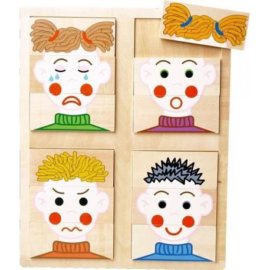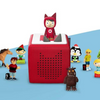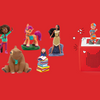Which toy function is needed for a child with autism

What is autism?
Autism is a holistic disorder of child development. This means that malfunctions are observed in all areas of development.
The first symptoms of autism appear very early, already in several months of infants, but they are always visible before the child reaches the age of 3.
The symptoms of autism mainly concern:
establishing contacts with other people,
communication skills
attachments to schemes.
Such persons are often unable to understand the behavior of other people or to establish normal contact with them. Although it does not mean that they do not communicate with the environment at all. Many children use other forms of communication, eg gestures, pointing images in special communication books.
In autism, there is often attachment to one pattern or rhythm in thinking and stereotypical behavior, but also a great interest in the narrow field of knowledge.
Senses
The obsession with the senses is also disturbed. Often such children may feel their body as if they have no full control over it, there are problems with sensory sensitivity or too little feeling, eg: the child does not like cuddling or the contrary: he/she approaches everyone and hugs him or loves to be very much cuddled. As far as the sense of hearing is concerned, it is often possible to observe aversion to specific sounds, noise, being in a crowd,

When dealing with a parent, he/she does not look at the subject he/she shows him, nor does he/she look in the eye, sometimes his gaze is "indifferent".
During play, it can be observed that a child plays with toys in a disturbing manner, contrary to their function, or prefers to play alone. He/she often gets angry or does not pay attention when someone else wants to join him. He/she does not respond to a smile, he/she does not initiate the play itself.
Therefore, parents and people from the closest circle of children with autism are hard at first to understand the disorder itself, and later, when they want to help somehow, they often do not know how.
Our experts have prepared a few hints as to how to choose toys for these children, to be attractive to them, and also affect their development.
Special educator pays attention to: "When choosing a toy for a child with autism, keep in mind the level of functioning of the toddler that we want to give. It all depends on the individual needs and preferences of the child. Careful observation of the child is very important - what he/she enjoys, entertains, calms. Because children with autism require multifaceted support, it is good to choose a toy in order to fulfill various functions.
Toy function to fullfill:
1. It provided the child with pleasure,
2. Taught fun
3. Comprehensively stimulated development, delivered multi-sensory stimulation (motor, perception, attention, sensory),
4. Encouraged to interact with a parent or a second child (eye contact, reciprocity, common area of attention),
5. Did not provoke self-stimulation (eg loud, flashing toys) "
Groups of toys
The first group are toys that shape small motor skills, visual-motor coordination, perception, but also understanding speech and even speaking. Later on, this group is joined by toys for thematic, social games or those that allow to understand causal relationships. When choosing these toys, we must take into account our role in introducing them - in short - before the child starts using them alone - we have to teach them how to do it properly.
The second group is stimulation toys. Observing a child, after a short time we know what kind of stimulation is particularly attractive for him. Some children focus on toys that emit sounds, others on shiny - luminescent and others on those with different textures. In this area, particular care should be taken to ensure that the delivered stimuli are not too intrusive and absorbing. Some children focusing on sensory experiences can cut off from other stimuli and thus delay their development. Therefore, when choosing sensory toys, consult your therapist well and share it with your child.
The last group are toys in accordance with the child's interests. For younger children, they may initially coincide with stimulus toys, later, as advances in therapy, this group will also increase with toys from the educational group. This is where all dinosaurs, trains, cars, garages and cartoon characters will be found. The wise management of these toys will help increase the child's motivation and improve its development. When choosing these toys the most important thing is to be attractive to the child and not to the parent.
All the best
Amousewithahouse




